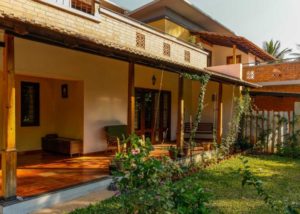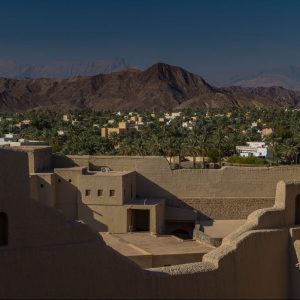“This house is intended as first approach to a conversation with nature, in which we and nature are equal partners; one may not overpower the other.” Hundertwasser
On a recent trip to Vienna, amidst the very European mix of Baroque, Renaissance and modern architecture, I came across the Hundertwasserhaus, which had a mention in every guide to the city. It’s not hard to imagine why-as one gets off the tram, the first thing that meets your eye are the stunning ceramic pillars that spring off the undulating cobblestone pavement. The uneven walls and the sweeping stairway are the next to meet your eye. In Vienna, while one does enjoy the streetscape, the interspersed greenery and the subtle diversity of styles, it does seem very orderly and controlled, still not losing the richness in its sensorial character. So when Hundertwasserhaus reveals itself amidst the composition of the Viennese facades, it is a visual delight that challenges ones perception of what you come to expect.
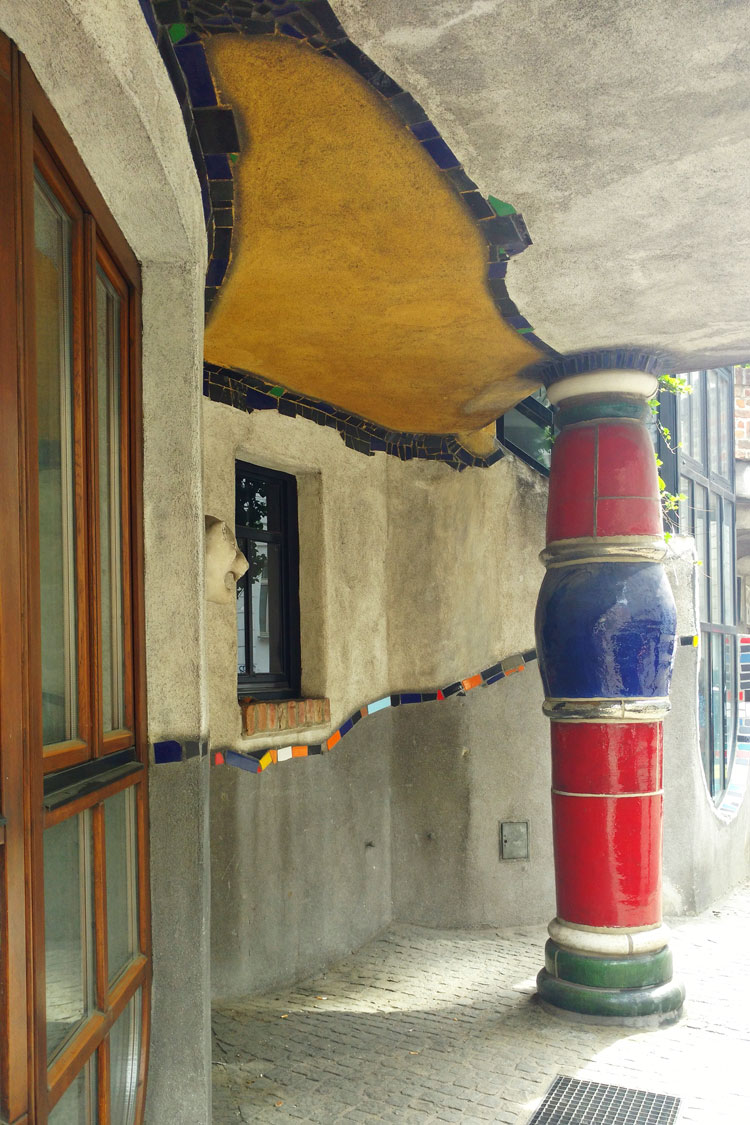
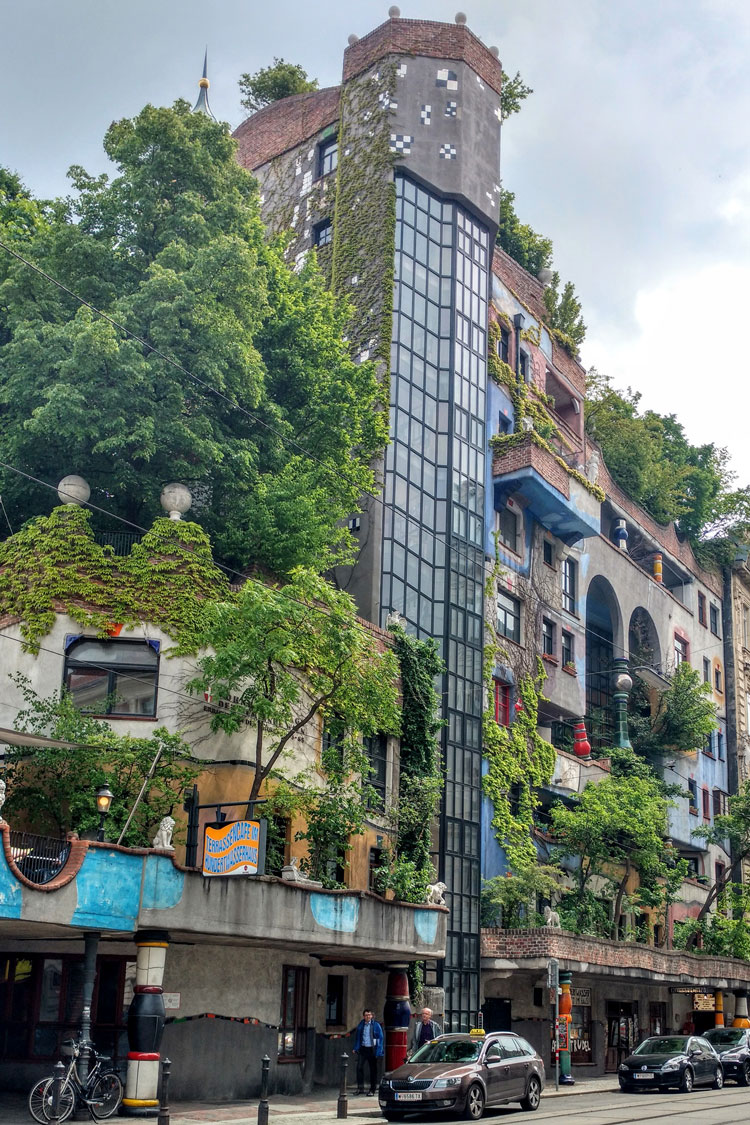
The Hundertwasserhaus is an apartment built with the vision and concept of Austrian artist Friedensreich Hundertwasser, with architects Peter Pelikan and Joseph Krawina. Built between 1983 and 1985, it challenged all existing norms and philosophies in architecture prevalent in Austria then. Hundertwasser grew up in WWII-era Germany. He believed that happiness could be found in joyful design, and that the straight lines and boxes of traditional architecture were a problem to be solved. Making a social, ecological and political statement, Hundertwasser tried to demonstrate the need for everyone to be involved in building their own home- which the artist calls a “third skin” and the right to express oneself where you live. Classified as Expressionist, the house has 53 apartments, four offices, 16 private terraces and three communal terraces, and a total of 250 trees and bushes it is one of Vienna’s most visited buildings and has become part of Austria’s cultural heritage.
“The WINDOW RIGHT means the freedom for the resident to recreate the prefabricated space of the apartment he is to live in. This is especially true of the outside wall of his flat. A person must be allowed to lean out of his window and to paint everything in arm’s reach pink, so people can see from far away, from the street, that there lives a MAN. He must also be permitted to let creeping plants grow on the outside walls. Whether the resident makes use of this window right or not is up to him. It is then not the governments, the authorities’ fault if the facades remain rigid in lethally sterile uniformity, and they can wash their hands of it.” Hundertwasser
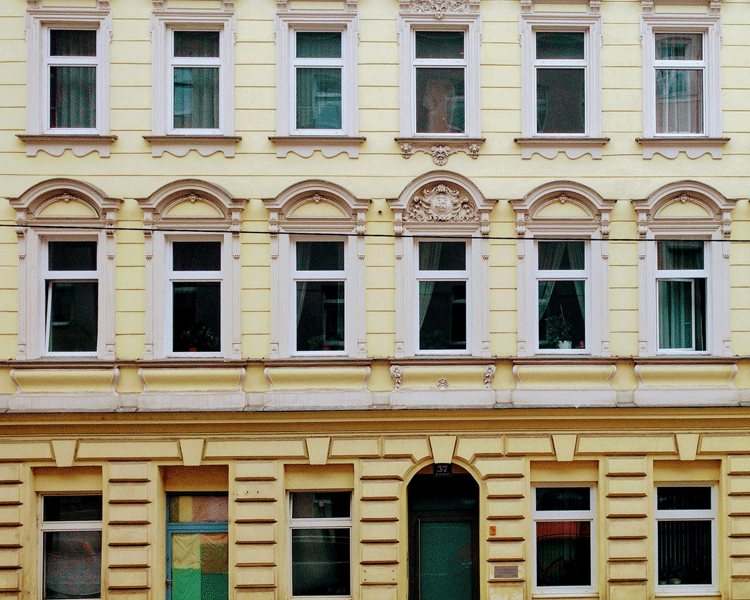
Fully visible from across the street, it is a collage of colours, windows, trees and creepers that make a picture that is relatable and that one wants to be a part of. The break from the regular, the organic façade convey a sense of comfort and curiosity, while symmetrical and organised facades inspire different sensibilities. The seeping staircase going up to the first level, the courtyard within, the scattered terraces and the beautiful colours convey an effort to explore lines and spaces that are uncommon and communicate the need to think about architecture and space.
“It is imperative that we must break with a whole series of regulations. These regulations, laws and ordinances, created at another time, under different conditions, for the benefit and protection of people, are now, in the light of new requirements and restrictions, directed against the environment and man.” Hundertwasser
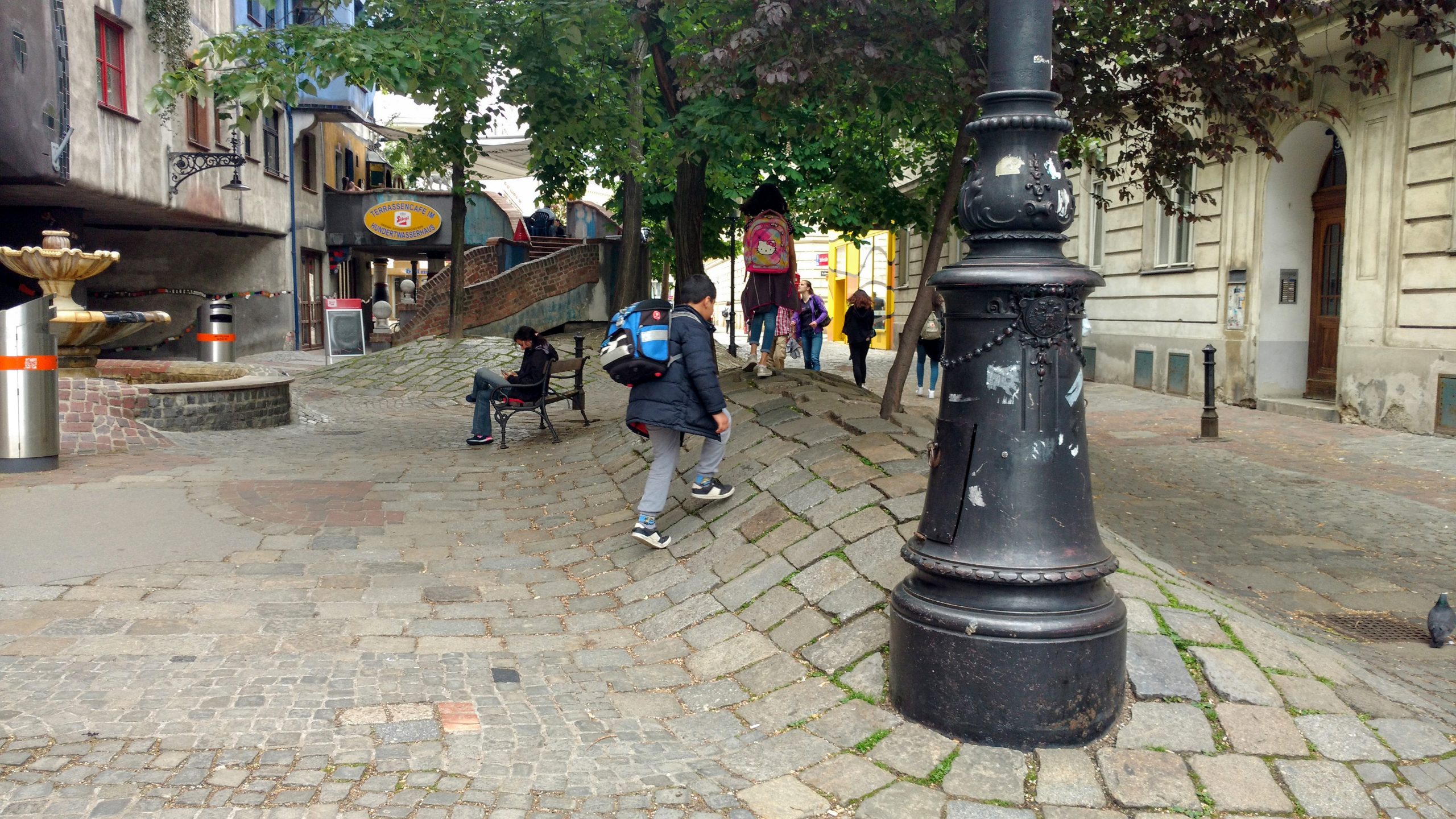
It is interesting to learn that Hundertwasser was on the governing municipal council and had radical ideas on the development of the city. He felt strongly that ecology and environment needed to be a part of how the city was envisioned and how people needed to be connected to nature. He has even drawn up a list of guidelines by which he thinks the buildings should be. While he has been compared to Antonio Gaudi as both their works appear to defy prevalent aesthetic norms and explore similar organic visuals- while Gaudi was a genius in his engineering and architecture, pushing the limits of structure and material to create spaces that defied the ordinary, Hundertwasser was an artist and attempted to provoke the population to think and be involved in building. Separated by seven to eight decades, they lived in different contexts and their work is a reflection of their time.
“When the resident moves in, his creative building activity must begin; it must not be finished when he moves in. In addition, there are unnatural laws strictly forbidding any “unauthorised changes” in the prefabricated building. In this way man is cooped up like an imbecilic slave without rights for whom any creative activity and redesign of HIS OWN living space is made impossible.” Hundertwasser
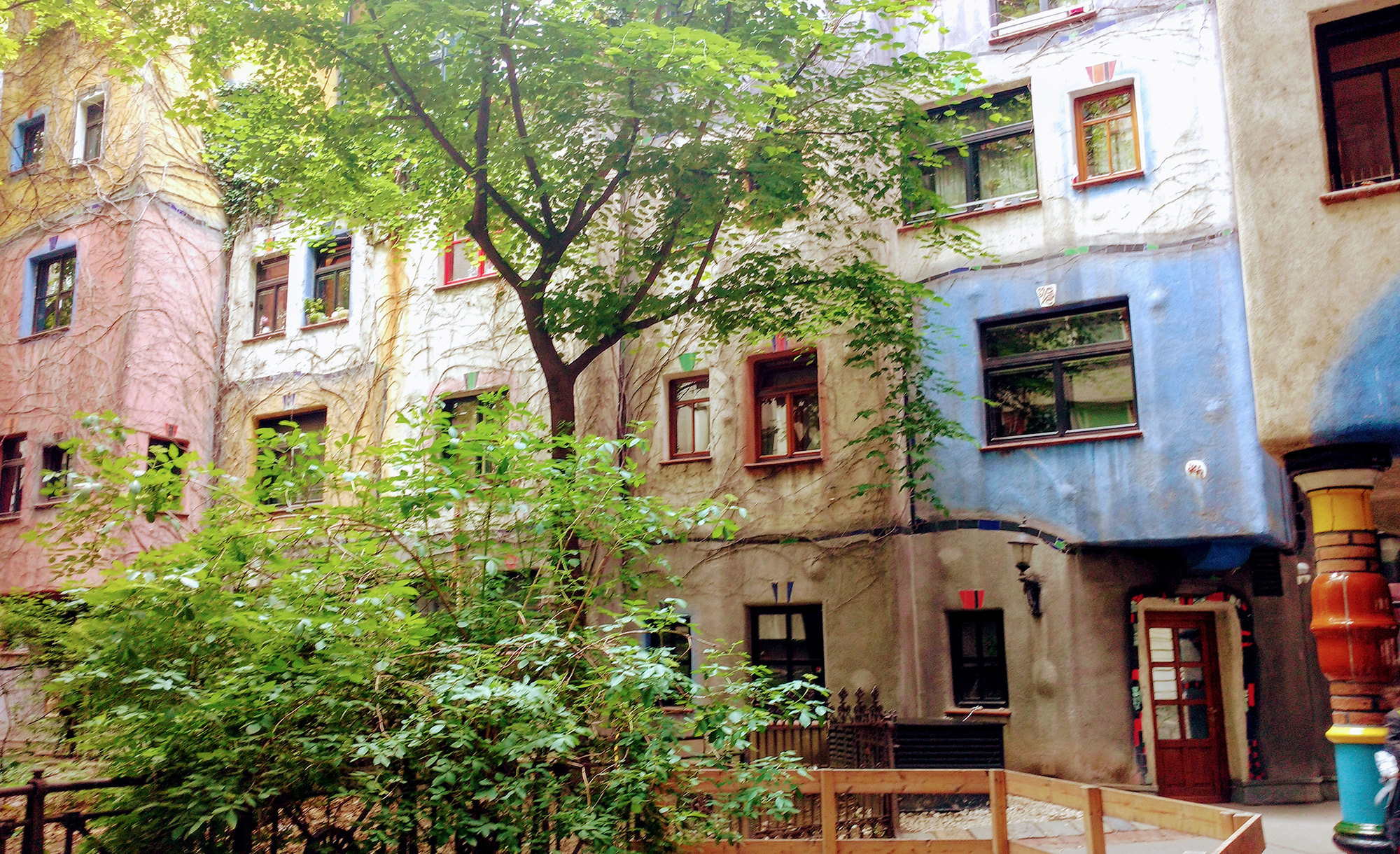
Coming from an Indian perspective, Vienna is an absolute contrast from the chaos of any Indian town or city. In India, the freedom to express ourselves aesthetically in building, is taken for granted, and has never been in question. Guidelines and rules set here are poorly conceived and hardly updated. So the freedom exists, and so does the chaos. Visions for the city lie with a few. Would it even be possible to work with guidelines as proposed by Hundertwasser? Even in Vienna, why did the example of Hundertwasserhaus not get replicated? So while people are in awe of the place, do they not really want to engage with their own homes? Are they content living in what is available and happy to adapt? Are ecological issues still not a priority, other social and economic issues taking precedence? At the end, are all these things not interconnected and need to be worked on holistically and together?
You can read more of what Hundertwasser had to say about development and building here.

